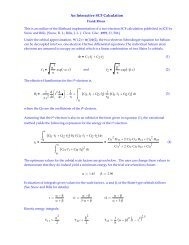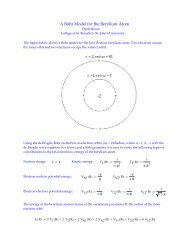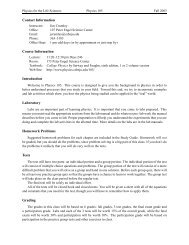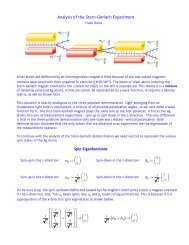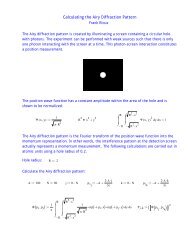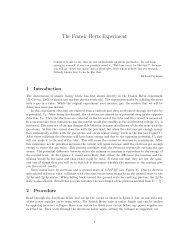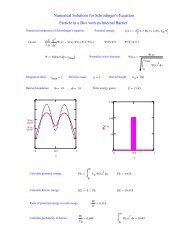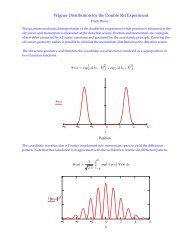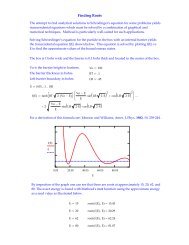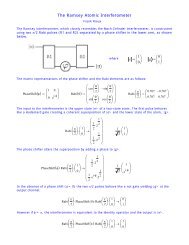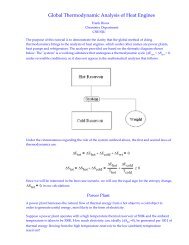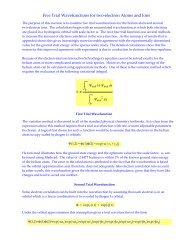Mathcad - GHZ-Briefer - Users.csbsju.edu
Mathcad - GHZ-Briefer - Users.csbsju.edu
Mathcad - GHZ-Briefer - Users.csbsju.edu
You also want an ePaper? Increase the reach of your titles
YUMPU automatically turns print PDFs into web optimized ePapers that Google loves.
00 0 0 0 0 0 0 1 0 0 0 0 1 0 0 0 0 xyy yxy yyx 0 0 0 1 0 0 0 0xxx 0 0 0 1 0 0 0 0 0 00 0 0 0 0 0 1 000 0 0 0 0 1 0 0 001100000000000000100000010000001000000100000010000001000000100000010000000This indicates the following relationship between the four operators and leads quickly to a refutation ofthe concept of noncontextual, hidden values for quantum mechanical observables. 1 2 3 1 2 3 1 2 3 1 2 3x y yyx y yyx xxxLocal realism assumes that objects have definite properties independent of measurement. In this exampleit assumes that the x- and y-components of the spin have definite values prior to measurement. Thisposition leads to a contradiction with the above result. There is no way to assign eigenvalues (+/-1) to theoperators that is consistent with the above result.Concentrating on the operator on the left side, we notice that there is a y measurement on the firstspin in the second and third term. If the spin state is well-defined before measurement those results haveto be the same, either both +1 or both -1, so that the product of the two measurements is +1. There is a y measurement on the second spin in terms one and three. By similar arguments those results will lead toa product of +1 also. Finally there is a y measurement on the third spin in terms one and two. By similararguments those results will lead to a product of +1 also. Incorporating these observations into theexpression above leads to the following contradiction. 1 2 3 1 2 3x x x x x xA brute force method can be used to confirm this result by showing that the left and right sides of theequation are not equal for any legitimate set of values for the individual spins. This is shown for severalsuch sets below.x1 1 x2 1 x3 1 y1 1 y2 1 y3 1( x1y2y3) ( y1x2y3)( y1y2x3) 1( x1x2x3) 1x1 1x2 1 x3 1 y1 1 y2 1y3 1( x1y2y3) ( y1x2y3)( y1y2x3) 1( x1x2x3) 1x1 1x2 1x3 1y1 1y2 1y3 1( x1y2y3) ( y1x2y3)( y1y2x3) 1( x1x2x3) 1The Kochen-Specker theorem demonstrates that it is, in general, impossibleto ascribe to an individual quantum system a definite value for each of a setof observables not all of which necessarily commute. N. David Mermin, PhysicalReview Letters, 65, 3373 (1990).



